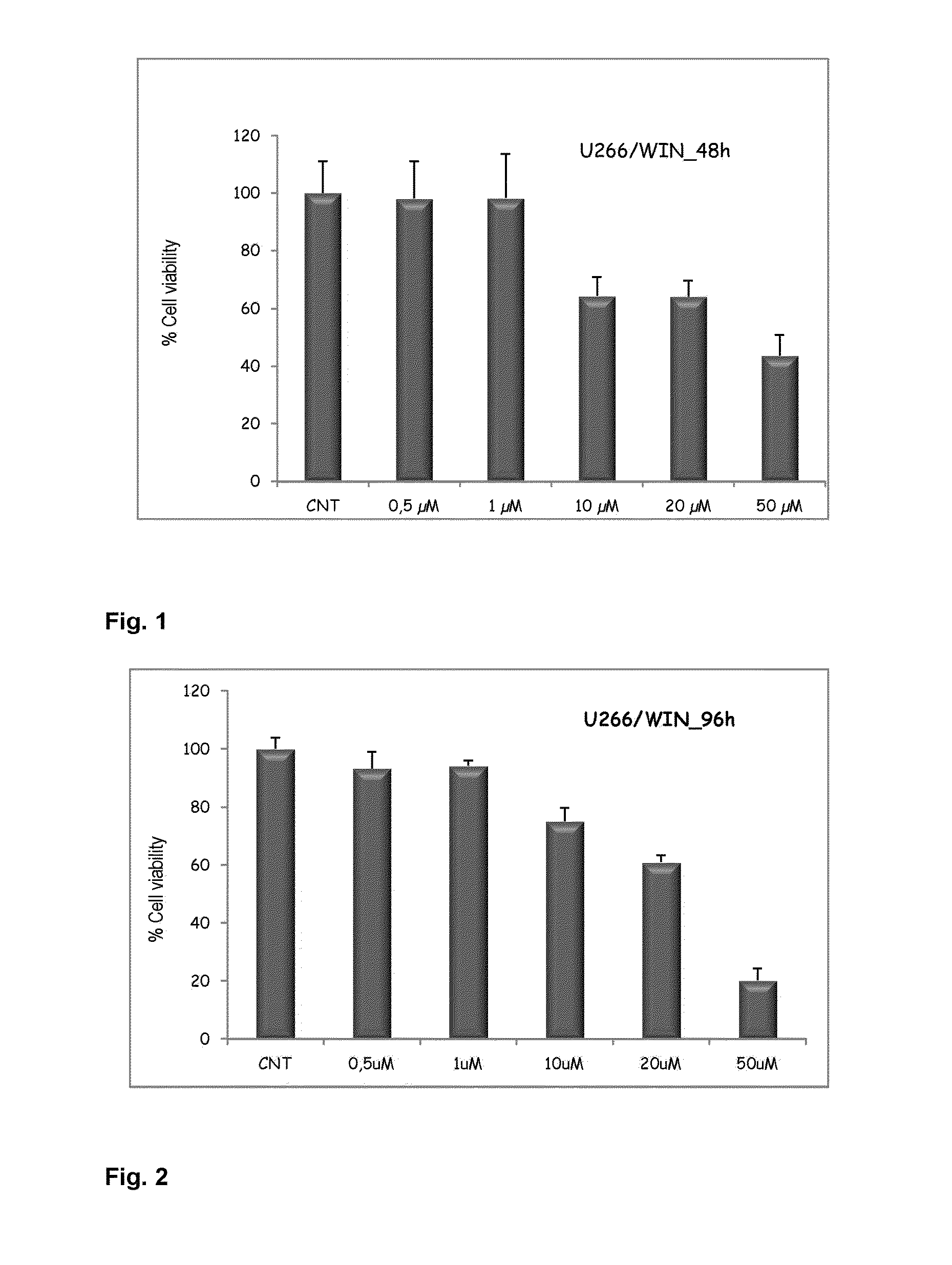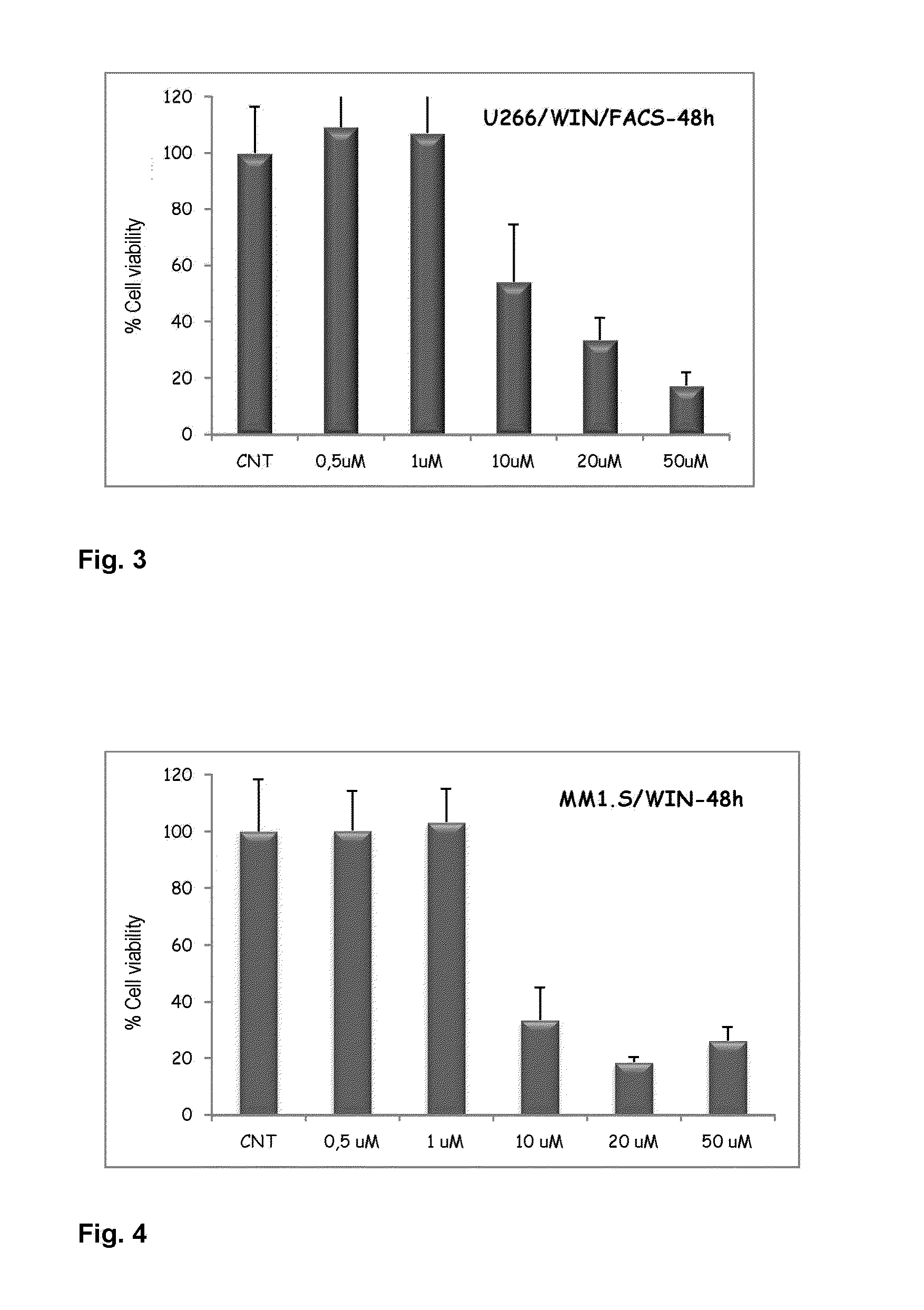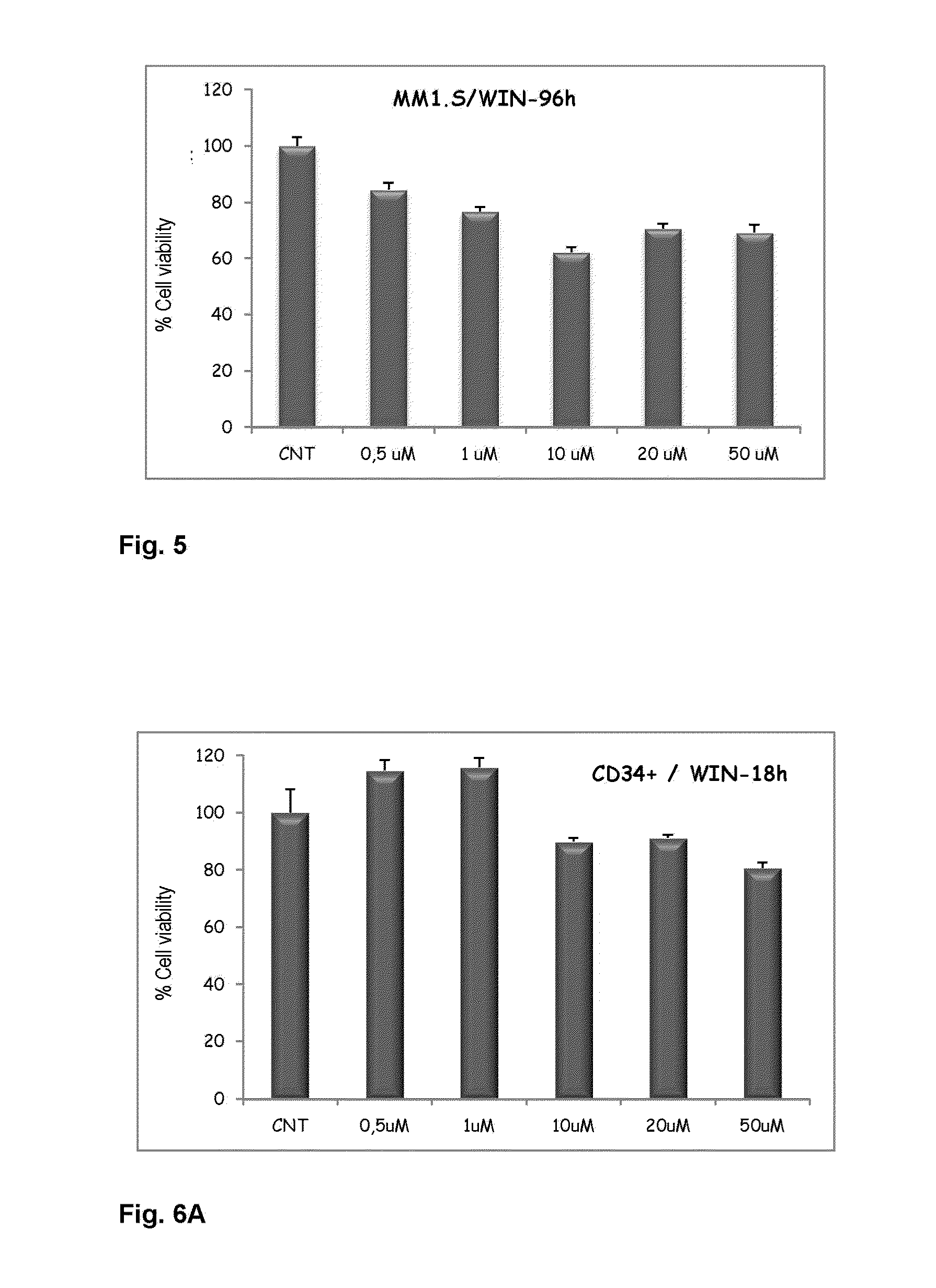Agents for treating multiple myeloma
a technology for multiple myeloma and agents, applied in the field of cannabinoid agents, can solve the problem of low survival rate for mm after five years
- Summary
- Abstract
- Description
- Claims
- Application Information
AI Technical Summary
Benefits of technology
Problems solved by technology
Method used
Image
Examples
example 1
Materials and Methods
MTT Assay Viability Analysis
[0091]The method for the determination of cell viability by means of the MTT assay is based on the capacity that viable cells have of metabolizing 3-(4,5-dimethylthiazol-2-yl)-2,5-diphenyltetrazol (MTT) bromide. The metabolic reduction of MTT due to the action of the mitochondrial enzyme, succinate dehydrogenase, gives rise to the insoluble and colored form called formazan, which can be quantified by means of spectrocolorimetry. The amount of living cells is proportional to the optical density resulting.
[0092]After incubation with cannabinoids, 10 microliters of MTT were added to each well and were incubated 2-4 hours in the same conditions. The reaction is subsequently stopped, the crystallized formazan is solubilized and optical density was determined at 450 nm in a plate spectrophotometer. All the assays were performed in triplicate.
Viability Analysis by Flow Cytometry
[0093]For the viability analysis by means of flow cytometry, the...
example 2
Cytoxicity of Cannabinoid Compound WIN 55,212-2 in Myeloma Cell Line U266
[0095]To determine the effect of cannabinoid compound WIN 55,212-2, myeloma cell line U266 was incubated for a period of 48 and 96 hours with increasing concentrations of WIN 55,212-2 between 0.5 and 50 uM; cell viability was determined by means of MTT metabolization. The MTT assay is based on the capacity of the mitochondrial enzyme, succinate dehydrogenase, of viable cells to transform tetrazolium salt MTT into a blue-colored product, formazan MTT, which is proportional to the number of living cells present. Mean proliferation values of untreated control cell cultures were taken as 100%.
[0096]As can be seen in FIG. 1, concentrations between 10 and 20 uM of the compound WIN 55,212-2 were capable of inhibiting cell viability by about 40%, and concentrations of 50 uM produced cell viability inhibition of about 60%. Additionally, as reflected in FIG. 2, longer incubation periods, specifically of 96 hours, produce...
example 3
Cytoxicity of Cannabinoid Compound WIN 55,212-2 in Multiple Myeloma Cell Line MM1.S
[0098]For the purpose of verifying the results described in Example 1, the authors of the present invention analyzed the capacity of the compound WIN 55,212-2 to inhibit viability of a second myeloma cell line, in this case multiple myeloma cell line MM1.S. The results of these experiments have been faithfully reflected in FIGS. 4 and 5.
[0099]In this sense, in order to carry out these assays the authors incubated myeloma cell line MM1.S at different concentrations with the cannabinoid agent WIN 55-212,2 for 48 and 96 hours, and cell viability was determined by means of MTT metabolization. Mean proliferation values of untreated control cell cultures were taken as 100%. The data corresponds to the means + / − the standard deviation of the triplicates of each of the 4 assays performed. As can be seen in FIGS. 4 and 5, cell viability noticeably dropped after concentrations greater than 1 uM when MM1.S cells...
PUM
| Property | Measurement | Unit |
|---|---|---|
| pH | aaaaa | aaaaa |
| concentrations | aaaaa | aaaaa |
| concentration | aaaaa | aaaaa |
Abstract
Description
Claims
Application Information
 Login to View More
Login to View More - R&D
- Intellectual Property
- Life Sciences
- Materials
- Tech Scout
- Unparalleled Data Quality
- Higher Quality Content
- 60% Fewer Hallucinations
Browse by: Latest US Patents, China's latest patents, Technical Efficacy Thesaurus, Application Domain, Technology Topic, Popular Technical Reports.
© 2025 PatSnap. All rights reserved.Legal|Privacy policy|Modern Slavery Act Transparency Statement|Sitemap|About US| Contact US: help@patsnap.com



